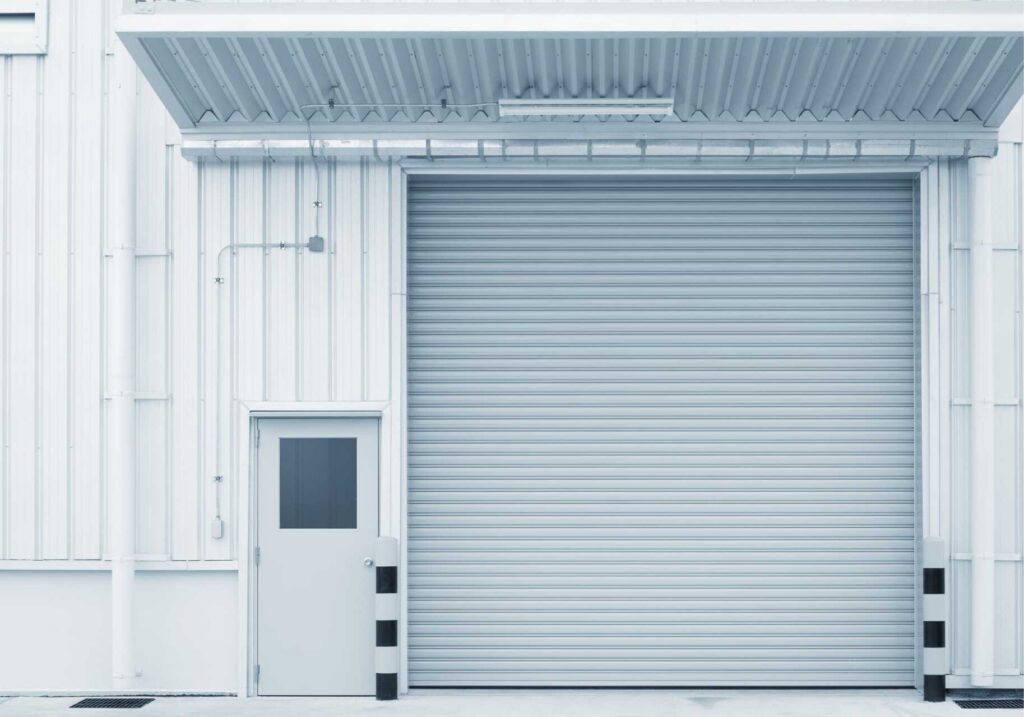
Contents
When maneuvering the complex terrain of steel structure budgets, it’s vital to understand the intricate dance between material costs, design complexity, site accessibility, labor expenses, project size, weather conditions, and custom features. Each factor holds the potential to sway your budget in unexpected ways, demanding careful consideration and strategic planning. As you explore the nuances of each element, you might uncover hidden insights that could redefine your approach to budgeting for steel structure projects. Stay tuned to uncover the key strategies for managing these essential factors effectively.
Key Takeaways
- Material costs impact budgets directly and are affected by steel prices, manufacturing expenses, and market fluctuations.
- Design complexity affects strength and aesthetics, requiring collaboration and specialized fabrication techniques.
- Site accessibility impacts transportation costs and logistics due to terrain, distance, and road conditions.
- Labor expenses depend on efficiency, skills, training, and cost-saving measures throughout the project.
- Project size influences material and labor costs, scalability considerations, and budget scaling strategies.
Material Costs
Material expenses greatly impact the overall budget for steel structures due to their direct correlation with the project’s expenditures. Steel prices are a significant component of material costs, influenced by market fluctuations and import duties. Understanding the dynamics of steel prices is essential for budgeting accurately.
Manufacturing expenses also play a crucial role in determining material costs. These expenses encompass the production processes, labor, energy, and overheads required to transform raw materials into steel components. Variations in manufacturing expenses can stem from factors such as technological advancements, labor wages, and energy prices.
Market fluctuations present a challenge in predicting material costs accurately. The steel industry is susceptible to market trends, global demand-supply dynamics, and geopolitical factors. Fluctuations in steel prices can impact project budgets, requiring contingency plans to mitigate financial risks.
Import duties are another vital factor to take into account when estimating material costs for steel structures. Duties imposed on imported steel can affect the final price of materials, directly influencing the project budget. Monitoring trade policies and potential duty changes is essential for cost-effective planning.
Design Complexity
Considering the intricacies of structural design is essential when evaluating the impact of design complexity on steel structure budgets. The level of design complexity directly affects both the structural strength and the visual attractiveness of the steel structure.
Structural integrity refers to the ability of the structure to withstand its intended loads and environmental conditions without experiencing failure. Complex designs often require more advanced engineering solutions to ensure the structural strength of the steel structure, which can lead to increased costs.
Moreover, design complexity plays a significant role in determining the visual appeal of a steel structure. Elaborate designs that involve unique shapes, patterns, or architectural features can enhance the visual impact of the structure but may also necessitate specialized fabrication techniques and materials. These factors can contribute to higher costs during both the design and construction phases.
Balancing structural strength and visual appeal within the constraints of a budget is vital when dealing with design complexity in steel structures. Collaborating closely with architects, engineers, and contractors can help enhance the design to achieve the desired aesthetics while maintaining cost-effectiveness.
Site Accessibility
Consider the impact of terrain on accessibility to the construction site, as it can greatly affect transportation costs and logistics planning.
Evaluate the distance from steel suppliers to determine potential shipping expenses and delivery timelines.
Assess road conditions thoroughly to anticipate any additional transportation requirements or costs that may arise during the project.
Terrain Impact on Accessibility
Topography directly influences the ease of access to a steel structure construction site. The topography challenges, such as steep slopes or rugged terrain, can significantly impact transportation costs and the overall budget.
Geographical constraints, such as remote locations or areas with limited infrastructure, may pose logistical issues that affect the efficiency of construction activities. When the construction site is situated in an area with challenging terrain, additional measures like road construction or specialized transportation equipment may be required to ensure materials and equipment can be transported effectively.
Addressing the impact of terrain on accessibility is crucial for effective budget planning. Understanding the topographical challenges and geographical constraints early in the project allows for proactive solutions to be implemented. By factoring in these considerations from the outset, potential delays and cost overruns due to accessibility issues can be minimized.
Proper assessment and planning for terrain impact on accessibility are essential components of managing steel structure construction budgets efficiently.
Distance From Suppliers
Analyzing the distance of suppliers to the construction site is important for evaluating accessibility and potential budget implications. The supplier distance directly impacts the efficiency of material deliveries and the overall construction timeline.
When suppliers are situated closer to the site, transportation costs tend to be lower, and delivery times are often quicker, facilitating a smoother workflow. This proximity also allows for more flexibility in delivery options, enabling just-in-time deliveries that can reduce the need for onsite material storage, hence optimizing space and potentially lowering costs.
Moreover, supplier reliability and availability are key factors affected by proximity. Suppliers in close distance are more likely to have better availability and faster response times in case of urgent material requirements or unforeseen circumstances. This can prevent delays in construction progress and mitigate the risk of additional expenses due to downtime.
Therefore, evaluating supplier distance and its impact on delivery efficiency, reliability, and availability is essential for optimizing steel structure budgets and ensuring a streamlined construction process.
Road Conditions Evaluation
Evaluating the condition of access roads to the construction site is crucial for determining site accessibility in the context of steel structure budget planning.
When analyzing road conditions, concentrate on factors such as road surface quality and traffic flow. Substandard road surface quality can result in higher maintenance costs for vehicles transporting materials to the site, impacting the overall budget.
Understanding traffic flow is important as heavy traffic or congestion can result in delays in material deliveries, affecting project timelines and potentially leading to additional expenses.
Labor Expenses
Understanding the impact of labor expenses on steel structure budgets is necessary for accurate cost estimation and project planning. Labor efficiency plays a pivotal role in determining overall project costs. Employing cost-saving measures, such as enhancing work processes and schedules, can markedly impact the budget. It’s crucial to have a skilled workforce that’s well-versed in steel structure construction to improve productivity rates. The efficiency of labor directly affects the timeline of the project and the final expenditure.
When considering labor expenses, it’s crucial to assess the productivity rates of the workforce. Skilled workers can complete tasks more efficiently, leading to cost savings in the long run. Investing in training programs and ensuring that the workforce is up-to-date with the latest construction techniques can boost productivity and reduce labor costs.
Cost-saving measures should be implemented throughout the project to manage labor expenses effectively. This includes proper planning, regular monitoring of labor efficiency, and adjusting schedules as needed. By prioritizing a skilled workforce and focusing on productivity rates, it’s possible to enhance labor expenses and stay within the allocated budget for steel structure projects.
Project Size
When considering the impact of project size on steel structure budgets, it’s essential to analyze how larger projects can lead to increased material and labor costs. Scalability considerations play a significant role in determining the overall budget, as larger projects may require more complex designs and structural elements.
Implementing effective budget scaling strategies can help mitigate the financial implications of larger projects and ensure cost-effectiveness throughout the construction process.
Size Impact on Costs
Larger steel structure projects typically incur higher expenses due to the increased materials and labor required for construction. As the size of the project grows, so do the costs associated with it. The scale of the structure directly impacts the amount of steel needed, the complexity of the design, and the workforce required, all contributing to higher overall expenditures.
When considering the impact of size on costs, it’s vital to understand how project size influences the budget. The table below provides a breakdown of the cost implications based on different project sizes, highlighting the significant financial variances that arise with scaling steel structures:
| Project Size | Cost Impact |
|---|---|
| Small | Lower costs due to fewer material and labor requirements |
| Medium | Moderate increase in costs compared to smaller projects |
| Large | Substantial rise in costs due to higher material and labor demands |
Analyzing the size impact on costs enables stakeholders to make informed decisions regarding budget allocations and resource management, ensuring cost-effective implementation without compromising structural integrity or architectural design.
Scalability Considerations
How does the size of a steel structure project impact its scalability regarding cost considerations?
The scalability of a steel structure project is closely tied to its size concerning expansion flexibility, cost efficiency, growth potential, and budget constraints. Larger projects typically offer more expansion flexibility due to the ample space available for future modifications or additions. This scalability factor allows for adjustments to be made as needed without significant structural changes, contributing to long-term cost efficiency.
Furthermore, the growth potential of a project is directly influenced by its size. Larger steel structures often have greater growth potential, accommodating future needs and developments.
However, it’s important to take budget constraints into account when scaling a project. While larger projects may have more room for expansion, they can also come with higher initial costs. Balancing growth potential with budget limitations is important to ensure that scalability aligns with financial capabilities.
Budget Scaling Strategies
Consider the project size as a vital factor when formulating budget scaling strategies for steel structures. The size of the project directly impacts the overall cost and resource allocation required for successful completion. When planning the budget for a steel structure project, it’s important to implement cost-saving methods that align with the project’s scale.
Financial planning plays an important role in determining how resources are allocated based on the size of the project. By carefully evaluating the project size, you can develop a strategic budget scaling strategy that improves resource management and ensures cost-effectiveness.
To effectively manage the budget of a steel structure project, consider implementing customized cost-saving methods that are suitable for the specific project size. This approach allows for efficient financial planning and resource management, ensuring that the budget is allocated appropriately to meet the needs of the project.
Weather Conditions
Adverse weather conditions have a big impact on the budget of steel structure projects. Construction delays due to weather can escalate costs significantly. Extreme temperatures, whether hot or cold, can lead to challenges during the construction phase, impacting both the schedule and budget.
When extreme temperatures occur, it affects the materials used in steel structures. For instance, in cold weather, concrete may take longer to cure properly, leading to delays in subsequent construction stages. This delay can result in additional labor costs and extended equipment rental expenses, ultimately impacting the overall project budget.
On the other hand, high temperatures can also pose challenges. Excessive heat can affect the structural integrity of certain materials and may require additional measures to ensure the quality of the build. These measures often come at an extra cost, thus influencing the project’s budget.
To mitigate the budget impact of adverse weather conditions, it’s essential to incorporate contingency plans in the initial project budget. By accounting for potential delays and additional costs associated with extreme temperatures, project managers can better prepare for unforeseen circumstances and ensure that the steel structure project stays within budget constraints.
Custom Features
Extreme weather conditions can impact the project budget for steel structures, and another factor that influences budgets is the incorporation of custom features. When considering customization options for steel structures, it’s vital to weigh the impact they may have on the overall budget. Custom features can enhance the aesthetic appeal and architectural design of the structure but may also come at an additional cost.
Structural integrity is paramount when incorporating custom features into steel structures. Any modifications must be carefully planned and executed to make sure that they don’t compromise the overall strength and stability of the building. Factors such as the material used, the complexity of the design, and the expertise of the builders can all affect the cost of implementing custom features.
While custom features can add a unique and visually appealing touch to steel structures, it’s essential to balance these elements with the project budget. Working closely with architects and engineers can help you navigate the customization process effectively.
Recap
When planning a steel structure project, carefully consider the following key factors:
- Material costs
- Design complexity
- Site accessibility
- Labor expenses
- Project size
- Weather conditions impact
- Custom features influence
By addressing these seven key factors, you can effectively manage your budget and ensure the success of your project.
Remember to:
- Monitor steel prices
- Enhance design efficiency
- Overcome site challenges
- Maximize labor productivity
- Scale projects appropriately
- Mitigate weather risks
- Balance custom elements for a cost-effective and high-quality steel structure.
Recent Posts
What Are the Benefits of Tailored Metal Structures?
Imagine a well-crafted suit tailored to fit perfectly; that’s how tailored metal structures operate in
3 Tips for Long-lasting Metal Commercial Structures
When it comes to metal commercial structures, you’ll want to focus on a few key
Explore Benefits of Residential Metal Structures
It’s funny how you might stumble upon the idea of residential metal structures just when




